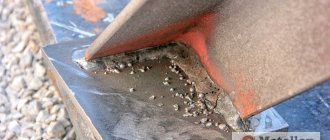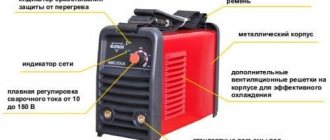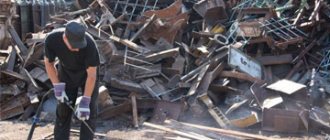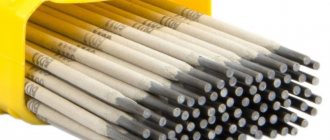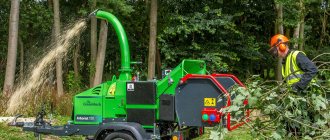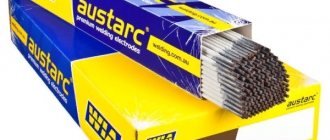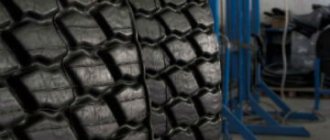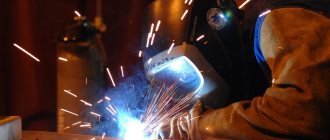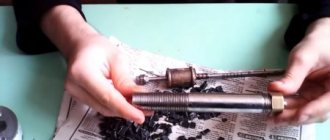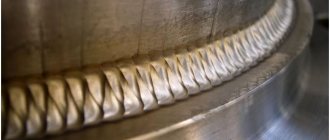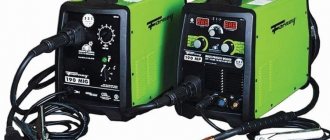Waste composition:
| Component name | Content, % |
| Silicon dioxide SiO2 | 39,1 |
| Manganese oxide MnO | 28,9 |
| Titanium oxide TiO2 | 15,2 |
| Iron oxide FeO | 13,2 |
| Calcium oxide CaO | 3,6 |
A source of information:
N.N. Potapov. Oxidation of metals during fusion welding. Welding materials for arc welding. Under. Edited by Potapov N.N. -Moscow, “Mechanical Engineering”, 1989
Alternative name of waste: Welding slag formed during melting of electrodes UONI 13/55
Processing and disposal of metallurgical slags
Modern furnaces at metallurgical plants produce much less slag than their predecessors from half a century ago. But metal smelting waste sites are expanding. Recycling ash and slag improves the environmental situation, provides financial benefits and saves raw materials for additional production.
Slag disposal
A significant part of the slag contains metallic inclusions. Such waste is difficult to process. The main processing method is screening followed by magnetic separation of metal elements.
This method has disadvantages: low quality of separation of metal and slag, increased wear of equipment, low profitability. New technologies are emerging that provide more precise separation as well as recovery of non-magnetic metals.
It is possible to extract 15% of metallic iron.
Slag freed from metal impurities is suitable for further industrial use. Porous slag is used as an additive to concrete. There are technologies for removing air (degassing) from metallurgical waste, which makes it possible to obtain dense construction crushed stone.
The processing of refined slags from the smelting of antimony concentrates presents a certain difficulty. Antimony and arsenic must be separated from waste so that they do not enter the environment. Recently, these impurities have been separated by water leaching.
Most metallurgical waste is processed in solid form, but melt processing is more efficient.
Slag waste from iron and steel smelting
Ferrous metallurgy slags include blast furnace and steel smelting. Blast furnace slag waste appears during iron smelting. Each type of cast iron - foundry, ultimate or special - has its own type of slag.
Steelworks are formed during the smelting of steel. They are divided into open-hearth, furnace and electric melting - according to the type of furnace. This group also includes slags that are formed during metal processing: crucible and welding.
Blast furnace slag is formed simultaneously with the smelting of cast iron. Slag masses have a lower density, so they float to the surface. The light fraction is drained through the upper hole of the blast furnace.
There are no metal inclusions in it. Then the cast iron is drained through the lower technological hole. The middle fraction remains in the furnace - slag containing metal.
It is sent for further processing to isolate metal residues.
We recommend reading: Procedure for disposal of alcoholic beverages
The composition of blast furnace slag depends on the type of ore, flux and fuel. About 95% of their mass is oxides of calcium, silicon and aluminum. Metallurgical waste is classified into one of the categories depending on the predominant mineral:
- acidic – slags with a predominance of silicon and aluminum;
- basic ones – with a high content of magnesium, calcium and manganese;
- intermediate - with equal content of acidic and basic compounds.
When processing slag from metallurgical production, the type of decomposition of the slag monolith is taken into account. Thus, during silicate decomposition, calcium silicate is transformed from beta to gamma form with an increase in volume.
A piece of slag becomes cracked and then crumbles into powder. Lime decay is the result of hydration of lime. Characteristic of open-hearth slags. The slag stone cracks and falls apart.
Steel slag
Waste from the steelmaking industry is 2 times less than blast furnace waste in volume, but a significant portion of steelmaking slag still ends up in dumps. This type is used:
- in the production of crushed stone;
- in blast furnaces and cupola furnaces as a flux;
- in agriculture for liming soils.
Generation and use of ash and slag waste
Ash and slag waste is generated mainly at thermal power plants. When burning crushed coal mixed with fuel oil, microparticles of ash fly away with flue gases. The organic component of the fuel turns into smoke and steam, the mineral components turn into ash and slag. The ash residue is sintered into large pieces. When mixed with slag, ash and slag waste is formed.
When CHP waste is stored in dumps, it occupies huge areas. A thermal power plant with a capacity of 1 GW per day produces 1000 tons of slag and ash. Such a mass of waste when buried in a layer of 8 m requires the alienation of more than a hectare of land per year. With such volumes, the processing of ash and slag waste is of great economic and environmental importance.
Waste composition:
| Component name | Content, % |
| Silicon dioxide SiO2 | 43,3 |
| Manganese oxide MnO | 4,6 |
| Titanium oxide TiO2 | 2,2 |
| Iron oxide FeO | 7,9 |
| Calcium oxide CaO | 42 |
A source of information:
N.N. Potapov. Oxidation of metals during fusion welding. Welding materials for arc welding. Under. Edited by Potapov N.N. -Moscow, “Mechanical Engineering”, 1989
View the calculation of the hazard class of this waste composition
Alternative name of waste: Welding slag formed during melting of Ts-3 electrodes
Residues and cinders of steel welding electrodes
Any production process is accompanied by the formation of a secondary by-product, which can be reused to obtain raw materials or must be disposed of. The only question that remains open is specifying the type of scrap according to the type of work.
See also the article: Electrodes - recycling and scrap metal.
Welding waste
The modern level of access to information allows you to navigate in any aspect of interest. There are two ways to determine what waste is generated from welding with welding wire. The first option involves a search query, the second is to visit the waste codifier 2022 welding on the corresponding web resource.
The information collected in the FKKO online catalog identifies the following waste from welding and soldering work:
- residues and cinders of steel welding electrodes;
- remains of steel wire;
- decomposition products of calcium carbide.
This is what welding slag looks like
Electrode stubs
Each of the points is worth considering in more detail, especially for the first category.
Welding slag – FKKO classification
The waste codifier assigns its own number to each by-product resulting from human production activities. In particular, for welding slag, the FKKO code has three variations. This:
- 9 19 100 02 20 4 – directly the slag formed during the electric welding process;
- 9 19 111 21 20 4 – slag waste with a predominance of silicon dioxide;
- 9 19 111 24 20 4 – welding slag, mainly containing titanium dioxide.
The last two options allow us to determine the main component of this type of welding waste. A somewhat different situation arises if we consider welding slag in general. The composition of this type of waste will be determined by the type of electrodes used.
Chemical composition of welding slag
The melting process characteristic of electric welding is always accompanied by oxidation of the metal. This explains the entry of predominantly oxides into the slag crust. The hazard class of this type of waste is IV, which requires issuing a waste passport for welding slag. The chemical composition of such waste, as mentioned earlier, contains oxides of the following elements:
- silicon;
- titanium;
- manganese;
- iron;
- calcium;
- sodium;
- aluminum;
- potassium.
However, in some cases, calcium fluoride keeps company with the oxides. This is explained by the inclusion of the compound directly in the composition of salt fluxes, as well as certain coatings of welding electrodes.
The presence of basic oxides inside the slag crust is similarly related. In particular, manganese plays the role of a deoxidizer, removing sulfur from the metal, while simultaneously improving the quality of the weld. Silicon also has a similar effect. It allows you to avoid gas pores inside the weld seam, which are formed due to carbon monoxide that has not had time to release.
Weld
Thus, slag acts as a full-fledged “participant” in the welding process, determining the structure and quality of the seam, and not just a production waste. Therefore, the physical and chemical properties of welding slags are an important characteristic.
Basic parameters of the slag layer
All chemical properties of the slag are directly related to the weld seam. They include: the ability to deoxidize the seam, alloy it, form fusible compounds from oxides, as well as dissolve them and sulfides. From the physical side, important criteria for slag are:
- Thermophysical parameters: heat capacity, threshold melting and softening temperatures.
- Viscosity.
- Specific gravity of liquid slag melt.
- Properties of the hardened crust, causing its easy separation from the metal being processed.
- Gas permeability.
The melting temperature allows us to divide slags into two groups: “short” with a range of 1100 – 1200 0C and “long” with large threshold values. Today, preference is given to short slags, therefore, in the production of electrodes, the composition of coatings and fluxes is mixed at lower melting temperatures.
Another important characteristic of slag is its viscosity. The mobility of individual layers of molten slag increases its chemical activity and, therefore, contributes to the refining of the weld metal. As a result, harmful impurities, in particular: manganese and iron sulfides, phosphorus anhydride, as well as oxygen and other gases; removed from the metal before the seam hardens.
Welding slag from a plasma cutter
The next criterion that attracts attention is waste density. Welding slag must have a low specific gravity in order to quickly rise to the surface of the bath. However, an excessively liquid slag melt is not able to evenly close the metal seam. Moreover, a higher density of welding slag (kg/m3 - unit of measurement) is especially important for vertical welding - ceiling, for example.
Steel cinders, other waste from the welding process
It is easy to determine the specific type of slag by knowing the composition of the electrodes: their coating, as well as the flux, if used. On the other hand, it is another type of arc welding waste. It is defined by FKKO as residues and cinders of steel welding electrodes.
This type of product is the main consumable material of the welding process. Despite the relatively small size of the waste: a part of the rod remains from the electrode, fixed in the holder fork; the total mass of cinders is quite large.
In some industries it amounts to hundreds of kilograms of scrap metal. Such waste is extremely rarely thrown away. Moreover, for the remains and cinders of steel welding electrodes, recycling is also extremely unprofitable.
It is more promising to use TX as a material for recycling.
Remains of welding electrodes
Indeed, most electrode cinders no longer have a coating and are ordinary metal wire of a certain diameter. In this case, the density of residues and cinders of steel welding electrodes is equivalent to a similar parameter of the metal. Thus, such waste can be melted down to produce new consumables.
Of course, the composition of welding electrode residues remains an important characteristic. Therefore, it is necessary to sort the cinders according to their type in order to obtain steel during the remelting process that is already alloyed with the required chemical composition and does not require further purification.
Sale of welding waste
The size of the cinders depends directly on the welder, more precisely on the place where he finished the work and is 50 - 100 mm. Thus, electrode waste remains a promising market for scrap metal. However, you should differentiate between web ads. Often, the phrase: let's buy the remains of electrodes means illiquid goods, and not a steel cinder, as such.
Disposal of welding waste, especially electrode residues, is becoming a regulated procedure. As a result, steel cinders are collected directly at the welding site and sorted according to the brand of the product. Next, the scrap metal is weighed and can be sold to a recycling site.
Alternatively, you can sell welding slag. The price for this type of waste will be significantly lower, and it is more difficult to find a buyer for it.
Source: https://xlom.ru/recycling-and-disposal/ostatki-i-ogarki-stalnyx-svarochnyx-elektrodov/
Waste composition:
| Component name | Content, % |
| Silicon dioxide SiO2 | 47,5 |
| Manganese oxide MnO | 13,7 |
| Titanium oxide TiO2 | 12,2 |
| Iron oxide FeO | 18,5 |
| Calcium oxide CaO | 8,1 |
A source of information:
N.N. Potapov. Oxidation of metals during fusion welding. Welding materials for arc welding. Under. Edited by Potapov N.N. -Moscow, “Mechanical Engineering”, 1989
Composition according to the 2nd source of information.
Recycling and processing of metallurgical slags
Recycling waste from metallurgical production is an important area of improvement and development of the industry.
When smelting metal ores, silicate-type waste is formed. By sending slag for processing, enterprises receive cheaper metal compared to the initial extraction from ore.
In addition, waste-free production improves the environmental situation in industrial cities, the condition of the soil and air in dump areas, and frees up land.
Use of recycled materials
Their quantity per 1 ton of source material depends on the method of metal extraction. Despite the introduction of waste-free production technologies in modern enterprises, tons of unprocessed raw materials are sent to landfills every day.
Since the middle of the last century, technologies for recycling waste from the metallurgical industry have emerged, making it possible to obtain cheap and high-quality materials from them. They are used in agriculture, industrial and residential construction, and road restoration.
For example, during the construction of subways, fire-resistant, durable materials that are not subject to weathering and corrosion must be used in the lining of tunnels. The lining is made in such a way as to withstand the pressure of rocks, groundwater, and seismic loads.
For lining tunnels, prefabricated structures made of cast iron tubing are often used. Slag processing products are widely used in the creation of subway tubing and for lining work in stations and tunnels.
Modern technologies
Processing of metallurgical slags consists of separating metallic inclusions from waste. The initial disposal is carried out by the metallurgical enterprise itself.
The process consists of transporting by-products to special pits where crushing weights are used.
After this, the metal component is separated using magnetic separation, and the rest is processed into crushed stone.
This technology is not suitable for stainless, heat-resistant and similar slags, since the metal component is non-magnetic. Modern technology makes it possible to extract up to 95% of metals, including non-magnetic ones.
The integrated waste processing technology consists of the following stages:
- Assessment of dumps by quantity and composition, including metal and non-metallic content, selection of large fragments.
- Consecutive use of three crushers: two tick crushers (the first up to a size of 150 mm, then the second up to 60 mm), the third cone crusher crushes into pieces up to 30 mm. At the end of each crushing stage, metal scrap is selected.
- Screening. Pieces larger than 28 mm are sent for crushing again. The result is the production of slags of 0-5 mm and 5-10 mm.
- The resulting raw materials are sent to separation, where metal raw materials are separated.
- The results of complex processing are the production of an oxide component (sand and crushed stone) and a metal component (ingots up to 1200 kg). The final product of the first raw materials is paving slabs, wall blocks, curb stones. Metal alloys are used to create refined charge billets.
Disposal of blast furnace slag
Ferrous metallurgy waste products are used to create a variety of products.
The inclusion of processed blast furnace slag raw materials in the mixture during cement production improves its quality characteristics. Slag pumice is used as a lightweight concrete filler and an inexpensive substitute for expanded clay.
Up to 20% of blast furnace slag materials are processed into crushed stone, which is used in road construction and added to concrete (grade M-300).
Another product obtained from the recycling of metallurgical waste is mineral wool.
Recycling technology
The technology for processing metallurgical slag includes the following operations:
- Primary crushing of large fraction (
- Primary magnetic separation.
- Secondary crushing of the non-magnetic fraction (
- Screening of the magnetic fraction.
- Additional purification of the magnetic fraction.
- Secondary magnetic separation of initial products into groups.
In ferrous metallurgy, the problem of using coke is acute. Therefore, the development of coke-free technologies for iron production is actively underway. The available source of energy for the ferrous metallurgy remains non-coking coal, and the raw material is low-grade iron ore (from dumps). Old equipment, such as a blast furnace, will not cope with this function.
An alternative is the units and processes of coke-free metallurgy. Processes using cheap energy resources - non-coking coal, blast with a small addition of oxygen - are considered promising from an economic point of view.
Among the methods for extracting iron from waste slag waste, crushing, grinding and metal separation are widely used.
The following equipment is used to process slag:
- Rotary crushers are the main equipment for processing; they allow you to obtain different fractions of the product (crushed stone, flour, crumbs). The machine with the maximum area can process up to 70 tons per hour.
- Inertial and vibrating screens are used for fractionation. Modern units allow you to get the right size, are safe, reliable and convenient.
- Magnetic separators separate the product as it moves on a conveyor belt.
- Conveyors.
The technological instruction prohibits the employee from:
- Block and litter the approaches to the units.
- Stand on the machine or place any objects on it.
- Allow unauthorized persons to operate the device and leave the equipment unattended.
During the production process it is prohibited:
- Change the position of parts on the device (springs, bolts)..
- Change the size of the unloading slot.
- Move fences.
- Lubricate equipment by hand.
- Use random objects to push through stuck stones.
Use of steelmaking slags
The volume of waste from the steelmaking industry is 2 times less than from blast furnace waste. However, most of them end up in dumps.
Half of the processed steel slag is used to produce crushed stone. A third of the total volume is consumed in the form of flux in blast furnace charge and cupola furnaces. Part of the processed products is used for agricultural needs.
Chemical composition of waste:
| Component name | Content, % |
| Fe | 50 |
| Fe2O3 | 10 |
| Mn | 3 |
| SiO2 | 37 |
A source of information:
Order of the GUPR and Environmental Protection Agency of the Ministry of Natural Resources of Russia for the Khanty-Mansiysk Autonomous Okrug No. 75-E dated June 16, 2004 “On approval of the approximate composition of hazardous waste present in the FKKO, which does not require confirmation of the hazard class for the natural environment”
Composition according to the 3rd source of information.
Alternative name of waste: Welding slag formed during welding with OMM-5 electrodes
Marking of electrodes for welding on stainless steel and cast iron
Any production process is accompanied by the formation of a secondary by-product, which can be reused to obtain raw materials or must be disposed of. The only question that remains open is specifying the type of scrap according to the type of work.
See also the article: Electrodes - recycling and scrap metal.
Basic electrode coating - characteristics
Any electrode coating is a mixture of crushed components and a binder. The powder mixture is applied to a metal rod and serves to protect against various external factors.
The main coating is designated by the letter "B" . This mixture is produced from calcium and magnesium carbonates. These include elements such as marble, magnesite, dolomite. Fluorspar (CaF2) is also added to the listed minerals as a slag diluent. calcium fluoride coated electrodes .
Characteristics:
Waste composition:
| SiO2 | 24.6 |
| TiO2 | 12.1 |
| FeO | 20.9 |
| Fe2O3 | 0.2 |
| MnO | 31.6 |
| CaO | 0.4 |
| Na2O | 3.4 |
| K2O | 1.9 |
| Al2O3 | 3.5 |
A source of information:
Welder's Handbook. Ed. V.V. Stepanova. Ed. 3rd, revised and additional Moscow. — Mechanical engineering, 1974
Alternative waste name: Welding slag generated during electrode welding
TsM-7
Welding slag as a prerequisite for the occurrence of slag inclusions
The main side effect of arc welding is welding slag. It is a by-product of non-metallic origin, which consists of either the molten electronic coating of the consumable electrode (in manual arc welding, including inverter welding) or molten welding flux (automatic submerged arc welding).
This material is a by-product because it must be removed after direct connection.
In the case when, for some reason, it begins to come into contact with the hardening part and becomes part of the resulting seam, this is a serious defect. This result is called slag inclusions.
They are visually visible on the surface of the product. You can remove slag inclusions when they are already completely in the hardened part only by drilling, and then weld it again.
The reason for the occurrence of slag inclusions is a situation when a small volume of metal hardens too quickly, as a result of which all the slag does not have time to “exit” beyond the weld pool area. If this defect is present, the connection will not be able to be used for its intended purpose.
Slag inclusions can be macroscopic or microscopic. The first ones appear in case of poor edge cleaning or its absence at all. They are a spherical material with elongated tails. Their occurrence can be avoided by thoroughly cleaning the edges of the parts being connected. Microscopic inclusions can arise during chemical reactions during the welding process, when the metal crystallizes.
Complete elimination of such manufacturing defects is impossible; with minor slag inclusions, the connection can be considered high quality.
There are certain conditions and signs under which the acceptable value of the presence of this type of defect on a product is established.
Such tolerances are established depending on the number, location and size of the defective seam; from the percentage ratio of the area of the entire defect to the area of deposited metal on the product; on the specific gravity of the deposited metal.
Reasons why a defect must be removed after work
- When removing slag, the product visually looks better.
- When many layers are produced.
- Often the product needs to be coated on top, for example with paint.
- To check how well the seam is made.
The main reasons for the appearance of slag inclusions
- Rapid solidification of small volumes of metal, as a result of which the slag does not have time to go beyond the boundaries of the weld pool.
- The use of electrodes and flux of high specific gravity and/or from refractory materials.
- Low rates of metal deoxidation.
Deoxidation involves the process of removing oxygen molecules from an already soft metal. Oxygen is a harmful component for it, which deteriorates the quality. - High surface tension force of slag. At the same time, it does not float to the surface.
- The edges of the parts or seam beads are poorly cleaned.
- Poor quality of the electrode, or rather its coating, which melts unevenly; its particles end up in the weld pool.
- Failure to comply with the rules and techniques and modes of connecting parts (choosing the wrong speed, angle of inclination of the electrode), changing the arc length for no reason.
- Unprofessional welder.
If you need a quality product, it is better to involve a specialist in this field in this difficult task. If you want to do everything yourself, then before you take on important, complex work, you need to gain practice with simple connections.
This is what welding slag looks like after being removed from a seam.
Professional welders are able to immediately distinguish slag from metal during welding and “drive” it out during the work process, however, everyone has their own advice on how to do this.
Some argue that it is better to use new electrodes in which the coating is darker and the metal is red (this does not apply to rutile electrodes), others say that the metal is more liquid and the slag is viscous. Its viscosity is affected by temperature.
To prevent the slag from covering the weld pool, it is necessary to adjust the position of the electrode. The position must be such that the direction of the gas from the evaporation of the electrode coating blows this defect onto the surface of the seam. Under no circumstances should the welder leave it in the weld pool. Welding slag should quickly succumb to the crystallization process and be removed without much effort.
It is inevitable that slag gets into the finished joint; such a defect, if not impossible to eliminate, is often very difficult. That is why there are acceptable standards for the presence of “extra” inclusions in an already welded product.
For example, in the interstate standard regarding building steel structures (put into effect in 2001). The annex to this document provides requirements for the quality of welded joints and permissible defects.
The requirements for slag inclusions are shown in the table below.
| Long defects | Not allowed | ||
| Short defects: | |||
| butt weld | h ≤ 0.2 S | h ≤ 0.25 S | h ≤ 0.3 S |
| fillet weld | h ≤ 0.2 K | h ≤ 0.25 K | h ≤ 0.3 K |
| Maximum inclusion size | 2 mm | 3 mm | 4 mm |
Thus, to ensure that slag appears correctly on the surface of the weld, you need to know how to distinguish it from the metal. If it is noticeable that the slag remains in the weld pool and does not come up, you need to change the angle of the electrode.
Before the joining process, it is necessary to take care of the proper condition of the edges, as well as the correct choice of modes and parameters. Electrodes must be chosen of high quality, then the weld will be of high quality. If all conditions are met, then the slag will be non-viscous, of low specific gravity, with low surface tension.
Only in this case, slag compounds will interact with the part, increasing its deoxidation rates, removing oxygen. And only then will the welding slag easily come out to the surface of the seam. Here you cannot do without the professionalism of the welder performing the work.
He must be able to distinguish slag from metal during welding and know why it appears in the first place. Only an experienced specialist will be able to make a high-quality and durable connection.
[Total: 2 Average: 3.5/5]
Source: https://svarkaed.ru/svarka/obuchenie-svarke/svarochnyj-shlak.html
Waste composition:
| SiO2 | 31.0 |
| TiO2 | 2.2 |
| FeO | 7.9 |
| MnO | 1.3 |
| CaO | 42.0 |
| CaF2 | 15.0 |
A source of information:
Welder's Handbook. Ed. V.V. Stepanova. Ed. 3rd, revised and additional Moscow. — Mechanical engineering, 1974
Alternative name of waste: Welding slag formed during welding with TsSh-4 electrodes
